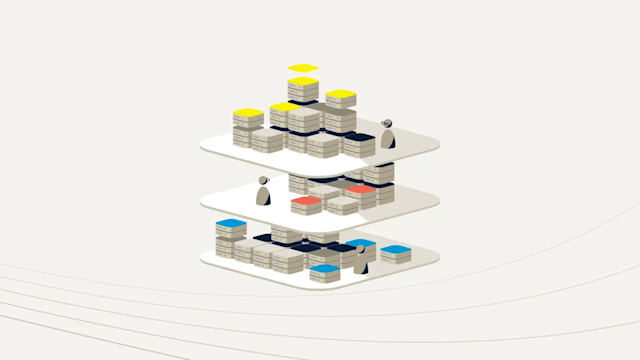What is high availability?
Understand the role of high availability in cloud computing and how it ensures service reliability through scalability, redundancy, and failover.
High availability (HA) refers to a system's ability to run continuously without failing for a designated period. It is a set of core principles: redundancy, fault tolerance, and failover mechanisms to maintain uptime and continuous service delivery. High availability systems are designed to survive hardware or software failures and keep running. These parallel systems can do this without noticeable loss of service.
Why high availability matters
Businesses looking to keep their operations running and reliable need a high availability system because it reduces downtime and revenue loss. Ensuring uninterrupted service helps organizations reduce service interferences that risk bad customer experiences. In today’s digital economy, keeping systems up and running is not simply a nice thing to have; it’s an essential business requirement.
Think of e-commerce sites that handle transactions 24/7 or healthcare systems that depend on 24-hour accessibility of patient data. Without HA, system failure is more common, causing both financial and reputational damage.
What is high availability architecture?
High availability architecture is built on the principle of having redundancy and failover mechanisms. An HA architecture includes patterns such as clustering (where multiple servers collaborate to handle requests) and redundancy (so if one component fails, another is ready to take its place). Most availability improvements use techniques based on high availability cluster configurations, such as active-passive and active-active setups. Failover processes find a graceful way for a system to recover from a failure by moving to another system.
What is clustering?
Clustering means grouping multiple servers or nodes to operate as one system, improving performance and enabling minimal downtime. Load balancing spreads workloads evenly between multiple servers so no one server becomes overwhelmed and all resources are used more efficiently. Clusters are purpose-built to accommodate higher traffic and demand while maintaining the appropriate service level agreement.
It may include a failover mechanism to redirect operations to a standby server. This uses “heartbeat monitoring,” or checks between servers to ensure they are working and can take over in case of failure. This methodology is important for applications where uptime is a necessity.
Active-passive clusters consist of a primary server that handles requests and a secondary that remains passive except in a failover situation. On the other hand, active-active clusters use all the servers simultaneously, balancing the load across them. The shared-nothing architecture design prevents single points of failure by ensuring they are independent, while the shared-disk architecture allows several physical servers to use the same storage system.
What is high availability in cloud computing?
Cloud computing’s distributed infrastructure helps with high availability because services remain operational even during partial hardware failures. These systems rely on scalability, redundancy and replication, automated resource management within the cloud, and geographic distribution to sidestep any disruptions. Cloud providers also provide tools and services that help build highly available applications by providing monitoring, scaling, and failovers.
Replication means data is replicated in multiple systems. Using distributed locations reduces risks from localized disruptions, so service remains available from multiple places.
Failover mechanisms redirect workloads to redundant standby systems when a failure occurs. Fault tolerance is a design approach that lets a system continue working when part of the system fails, whether the failure is in hardware or software.
Should you spend the time and resources on high availability?
High availability has a cost-benefit ratio that can be measured. In many cases, you'll find the money well spent in return for reduced improved continued business operation and reduced losses due to downtime. Although high availability systems use more resources to set up and maintain, the long-term benefits of increased reliability and customer retention make it an investment that pays for itself over time. Minimizing the risk of service interruptions means organizations can spend that time and energy innovating and growing rather than worrying about recovery.
Because a high availability solution also improves system reliability, businesses more consistently meet their customers' expectations, which helps improve customer satisfaction and trust. Moreover, HA systems provide businesses a competitive edge by ensuring seamless operations and uninterrupted services, leading to sustained growth and market presence.
Measuring high availability
How do you know how available a system is? The formula is usually written as uptime / (total time) and expressed as a percentage.
For example, a system with 8,700 hours of operational time and 8,760 hours in a given year has availability = (8,700/8,760) * 100, which is roughly 99.32 %.
This percentage isn’t enough in many organizations; their goal is “five nines uptime” (99.999%), meaning a system is up 99.999% of the time and would have only 5.26 minutes of downtime each year. This degree of availability requires solid infrastructure and planning.
Key metrics to track
MTBF (mean time between failures ): The average time between two consecutive failures in a system. A higher MTBF is better because it indicates a more reliable system.
MTTR (mean time to recovery): The average time to return a system to full functionality after a failure. Reducing the MTTR is vital to minimizing downtime.
High availability operational best practices
Just having redundant hardware and software isn’t enough. HA systems require operational procedures as well.
Regular data backups are essential for protecting against loss due to hardware failures or cyber-attacks.
It is also important to identify single points of failure in a network or application and find ways to provide backup systems.
Recovery and replication processes should be identified and tested to restore services quickly.
Planning for failure by having robust disaster recovery plans in place and doing regular drills.
Should you spend the time and resources on high availability?
High availability has a cost-benefit ratio that can be measured by dividing the benefit of the project by the cost of the project. In many cases, you'll find the money well spent in return for reduced losses due to downtime. Although high availability systems use more resources to set up and maintain, the long-term benefits of increased reliability and customer retention make it an investment that pays for itself over time. Minimizing the risk of service interruptions means organizations can spend that time and energy innovating and growing rather than worrying about recovery.
Because high availability solutions also improve system reliability, businesses more consistently meet their customers' expectations, which helps improve customer satisfaction and trust. Moreover, HA systems provide businesses with a competitive edge by helping them to operate smoothly and provide uninterrupted services.
Take your next steps to high availability with Aerospike
Aerospike's high availability (HA) solutions are designed to ensure databases run without interruptions, even with hardware outages or network issues. Aerospike does this by eliminating single points of failure, ensuring reliable crossover between redundant systems, and detecting and addressing failures. The platform incorporates features such as server or node failover, hot standby, data replication, and a distributed microservices architecture to maintain service continuity.
Aerospike's HA model also offers multi-site clustering, which allows a single cluster to span multiple geographies. This approach makes data more available and resilient because it detects and responds to failures, such as the loss of a data center or network disruptions, so applications continue to run. Aerospike's architecture supports both high availability and strong consistency modes, allowing businesses to choose the best fit for their specific needs. With Aerospike's HA capabilities, organizations can be up longer, cost less to run, and have happier customers.
If you're interested in learning more about how Aerospike can enhance your application's availability and resilience, visit our website or contact our team to discuss how our solutions can be tailored to meet your business needs.
The high availability cluster is the backbone of resilient IT architectures, dispersing workloads among multiple servers. This not only provides load balancing but also failover, with tasks being automatically passed to healthy servers in the event of a server failure. Clusters are purpose-built to accommodate higher traffic and demand while maintaining the appropriate service level availability.
HA works through mechanisms that make the system more resistant with less downtime. The following concepts help ensure service availability:
-
Redundancy means duplicating important system elements so that when one fails, others take over.
-
Replication means copying data to different nodes or locations so that when one source of data fails, another copy of that data is available.
-
Load balancing distributes network or application traffic across servers so that no one server becomes overwhelmed. This process helps utilize resources more efficiently, minimizes latency, and improves fault tolerance.
-
Scalability means designing systems that can handle more data while maintaining performance levels. This requires databases and storage methods that can scale with demand.
-
Geographical diversity makes copies of data in other locations to help ensure such services are still accessible even when one location goes out.
-
Health checks monitor system components on an ongoing basis to verify that they are working properly and to initiate automated responses if a failure occurs.
How do these all work together? Imagine an e-commerce platform that uses redundant servers and replicated databases so traffic spikes and server downtimes do not affect user experience. Together, they create a continuous, reliable HA system.
-
Having multiple application servers prevents single points of failure and reduces the load if one of the application servers crashes.
-
Single points of failure elimination means identifying and removing components or nodes in a network or application that could fail causing the entire system to go down. It often means duplicating systems or components.
-
When scaling databases, we use replication, and partitioning to effectively manage growing data loads.
-
Distributed locations reduce risks related to localized disruptions, ensuring service availability from multiple locations.
-
Clustering means grouping servers together, so they work together and can provide redundancy and load balancing.
-
A network load balancer distributes resource use so workloads are more efficient.
-
Failover systems take over on failure automatically, minimizing service disruption.
-
With imperfect code changes, good monitoring is essential to catch failures, notify the team, and fix them promptly.
-
Backup and restore systems and services mean data is available more quickly following a failure, leaving continuity and reliability intact.




